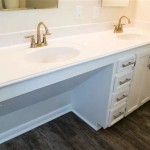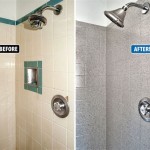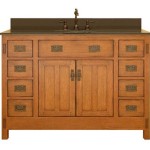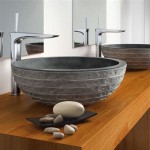How To Replace a Bathroom Light Bulb
Replacing a bathroom light bulb is a common household task that, while seemingly simple, requires careful attention to safety and proper procedure. It’s crucial to understand the different types of light bulbs, the potential hazards involved, and the necessary steps to ensure a successful and safe replacement. This article provides a comprehensive guide on how to replace a bathroom light bulb, covering everything from preparation to troubleshooting.
### Preparing for the ReplacementBefore initiating the light bulb replacement, adequate preparation is paramount. This involves gathering the necessary tools and materials, identifying the correct type of replacement bulb, and ensuring the safety of the work environment.
The first step is to assemble the required tools. Typically, this includes a stepladder or sturdy chair to reach the light fixture, a pair of rubber gloves to protect against electrical shock and provide a better grip, and potentially a screwdriver if the light fixture cover requires it. A small trash bag or container to discard the old bulb is also useful.
Identifying the correct replacement bulb is essential. Different types of light bulbs are available, including incandescent, halogen, compact fluorescent (CFL), and light-emitting diode (LED). Each type has unique characteristics regarding energy efficiency, lifespan, and light output. The existing light bulb should be carefully examined to determine its type, wattage, and base type (e.g., screw-in, bayonet). This information is usually printed on the bulb itself. Purchasing a replacement bulb with the same specifications ensures compatibility and prevents potential issues such as overheating or flickering.
Safety is the top priority. Before proceeding, the power to the light fixture must be turned off at the circuit breaker. This eliminates the risk of electrical shock. Locating the correct circuit breaker that corresponds to the bathroom light fixture is essential. Many homes have a circuit breaker directory, either printed on the breaker box itself or available separately. If the correct breaker is unknown, a process of elimination can be used, carefully switching off breakers one at a time and testing the light fixture until the power is cut off. It is highly recommended to have another person present during this process for added safety. After switching off the breaker, verify that the light is indeed off by attempting to turn it on at the switch.
Furthermore, allow the old light bulb to cool down completely before attempting to remove it. Hot bulbs can cause burns. If the bulb was recently used, wait several minutes for it to cool to the touch.
### Removing the Old Light BulbThe method for removing the old light bulb depends on the type of fixture and bulb. Some fixtures have a cover or globe that needs to be removed first, while others allow direct access to the bulb. Careful observation and gentle handling are crucial to avoid damaging the fixture or the bulb, which can shatter and cause injury.
If the light fixture has a cover or globe, it usually attaches with screws, clips, or a twist-and-lock mechanism. Identify the attachment method and carefully detach the cover. If screws are involved, use the appropriate screwdriver size to avoid stripping the screw heads. For twist-and-lock mechanisms, gently rotate the cover until it releases. Be prepared to support the cover as it comes loose to prevent it from falling and breaking.
Once the bulb is accessible, it can be removed. For screw-in bulbs, grasp the bulb firmly with a gloved hand and turn it counterclockwise until it comes loose. Apply steady pressure while turning to avoid breaking the bulb. If the bulb is stuck, avoid excessive force, which could cause it to shatter. Instead, try wearing thicker gloves for a better grip or using a rubber jar opener to assist with turning. In extreme cases, a pair of needle-nose pliers can be used to gently grip the base of the bulb, but caution is essential to prevent breakage.
For bayonet-style bulbs, which have small pins that lock into slots, gently push the bulb inward and turn it counterclockwise. The pins should align with the open part of the slots, allowing the bulb to be pulled straight out. Again, avoid excessive force and handle the bulb carefully.
When removing the old bulb, be mindful of any debris or broken glass that may be present. If the bulb is broken, use a broom and dustpan to carefully sweep up the glass shards. Avoid using a vacuum cleaner, as it can spread the glass particles and damage the vacuum cleaner. Wear gloves and eye protection when cleaning up broken glass.
### Installing the New Light BulbInstalling the new light bulb is essentially the reverse of the removal process. It is crucial to handle the new bulb carefully, avoiding direct contact with the glass, as oils from the skin can shorten the bulb's lifespan. Proper installation ensures a secure connection and prevents issues such as flickering or premature failure.
Before installing the new bulb, inspect the socket for any signs of damage or corrosion. If the socket appears damaged, it may need to be cleaned or replaced by a qualified electrician. Ensure that the socket is clean and dry before proceeding.
For screw-in bulbs, align the base of the bulb with the socket and turn it clockwise until it is snug. Avoid overtightening, as this can damage the socket. The bulb should be securely in place but not forced.
For bayonet-style bulbs, align the pins on the bulb with the slots in the socket, push the bulb inward, and turn it clockwise until it locks into place. The bulb should be firmly seated in the socket.
Once the new bulb is installed, carefully replace the light fixture cover or globe, using the same method that was used for removal. Ensure that the cover is securely attached to prevent it from falling. If screws are involved, tighten them securely but avoid overtightening.
After the cover is in place, turn the power back on at the circuit breaker. Test the light fixture by turning the switch on. If the light does not turn on, there are several possible causes. The most common is that the bulb is not securely in the socket. Try turning the bulb slightly to ensure a good connection. Another possibility is that the circuit breaker tripped. Check the breaker box and reset the breaker if necessary. If the light still does not turn on, there may be a more serious electrical problem, and a qualified electrician should be consulted.
Proper disposal of the old light bulb is also important. Incandescent and halogen bulbs can be safely disposed of in the regular trash. However, CFLs and some LEDs contain small amounts of mercury, which is a hazardous substance. These bulbs should be disposed of at a designated recycling center or hazardous waste collection facility. Many retailers that sell light bulbs also offer recycling programs. Contact your local waste management authority for information on proper disposal options in your area.
Replacing a bathroom light bulb, while straightforward, requires attention to detail and adherence to safety precautions. By following these guidelines, individuals can safely and effectively replace their bathroom light bulbs and maintain a well-lit and functional bathroom.

How Do I Replace The Bulb In This Enclosed Bathroom Ceiling Light Hometalk

How To Replace A Bathroom Light Fixture

Easy Ways To Replace An Led Recessed Light Bulb 13 Steps

How To Remove Light Bulb Bunnings Work Community

How Do I Replace The Bulb In This Enclosed Bathroom Ceiling Light Hometalk

Bathroom Lighting How To Replace A Vanity Light The Home Depot
Dome Ceiling Light Bulb Replacement Ifixit Repair Guide

How To Change A Lightbulb In Recessed Light 3 Easy Solutions

Modern Ceiling Lights How To Install By Home Repair Tutor

Unable To Remove Bathroom Light Fixture Change Bulb Doityourself Com Community Forums
Related Posts







